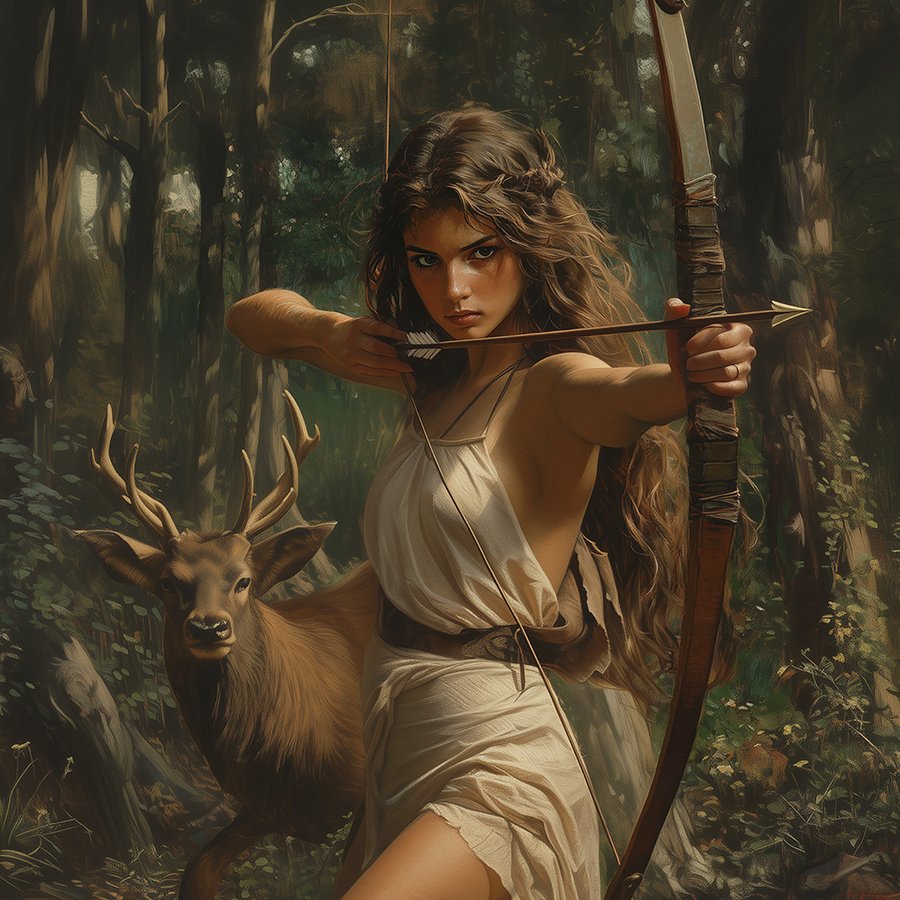Artemis
Artemis, the Greek goddess of the hunt, wilderness, childbirth, and virginity, emerges as a formidable and influential figure, with origins in pre-Greek cultures of Asia Minor. Her association with the moon and her role in fertility and healing underline her spiritual significance, while her influence extends to modern Pagan and feminist movements, symbolizing female strength and autonomy.
Mawu
In the mystical realm of Dahomey mythology, the goddess Mawu emerges as a supreme figure of nurturing power and cosmic balance. Alongside her twin brother and husband, Lisa, Mawu represents the divine feminine, embodying the interplay between creation and destruction, light and darkness. As the mother of creation, she breathes life into the universe, nurturing the growth of plants and guiding natural cycles with her celestial influence. Mawu’s dominion over the moon and stars reflects her illuminating presence, symbolizing the rhythmic ebb and flow of life and the interconnected harmony of all living beings.
Selene
Selene, the Greek goddess of the moon, was a Titaness and the daughter of Hyperion and Theia. She is often depicted with a lunar crown or crescent, driving her silver chariot across the night sky, illuminating the world with her soft glow. Known for her association with romance, Selene’s love story with the mortal Endymion symbolizes the eternal connection between the moon and desire. Revered in ancient Greece and continuing to inspire modern art and spiritual practices, Selene remains a potent symbol of the moon’s beauty and the mysteries of the night.




